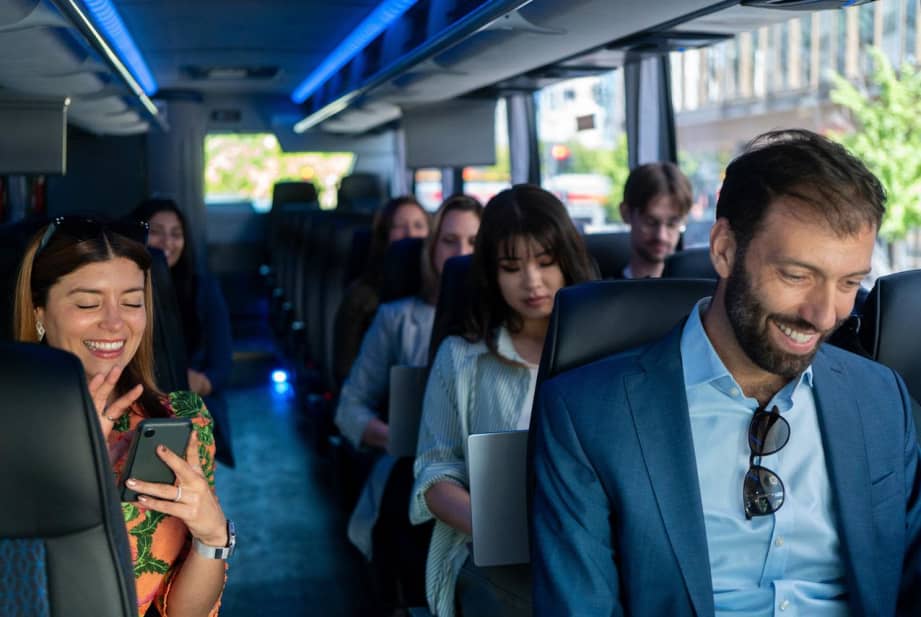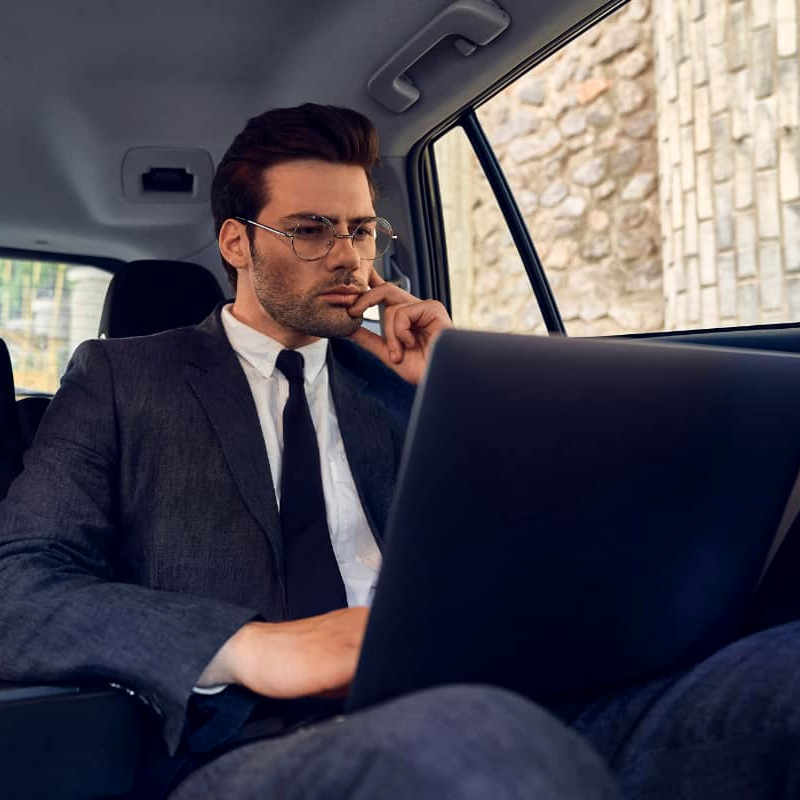Here are 10 helpful tips to plan routes and cover of employee shuttles:
1. Understanding the needs of employees
Conduct surveys or focus groups to find out where employees reside, their preferred shuttle times, and any specific needs (like accessibility requirements). This information is crucial to design routes that increase the level of satisfaction and involvement.
2. Study traffic patterns
Patterns of traffic flow and peak hours around your organization should be studied. Google Maps can be used to find congested routes. Avoid these routes during shuttle time. This can aid in reducing delays and ensure an enjoyable journey.
3. Utilize Technology
Implement software for route planning which optimizes routes based on the most current information about traffic and schedules of employees. Shuttle apps can be utilized to adjust routes dynamically and ensure that your service is the most efficient.
4. Establish Strategic Pickup Points
Pickup locations in central areas that are easily accessible to the majority of your workers. Look for locations that are close to public transportation hubs or residential zones. This will maximize coverage and prevent the need to extend the route.
5. Create a Flexible Schedule
Develop a system for scheduling that can accommodate a variety of employee hours. Offering shuttles for peak times of arrival and departing, and also off-peak hours, will boost participation and be able to accommodate the various shifts.
6. Install a Loop Feedback
Encourage your employees and customers to share their feedback about shuttle services. Make use of this feedback to make adjustments to routes, schedules or pickup locations. It is crucial to regularly evaluate the satisfaction of your employees in order to maintain a level of service that is in line with the requirements of employees.
7. Analyze and Monitor Usage Data
Monitor shuttle use patterns to identify which routes are most popular and those that may require adjustments. Through analyzing the data you can make more informed choices about how to allocate resources or improve service.
8. Encourage Ridesharing and Carpooling
Encourage employees to use carpools in conjunction using the shuttle service. It will allow for an increase in the number of shuttles, and greater flexibility. Ridesharing apps that permit riders to ride together can cut down on the overall cost of transportation.
9. Consider Environmental Impact
Plan routes that minimize carbon emissions by using energy-efficient shuttles. Encourage the use of hybrid or electric vehicles as part of the shuttle you use. This not only supports the sustainability objectives but also resonate well with employees who value eco-friendly practices.
10. Check for Safety and Compliance
Make sure you adhere to all safety regulations and laws. This includes periodic maintenance checks for vehicles, assuring that drivers are certified and trained as well as providing insurance coverage. The planning of transportation should always consider safety.
These methods will help you create an employee shuttle system that is effective and efficient that is able to meet the needs of your employees and maximizes resource usage. See the best employee transportation for site info including airport transportation near me, los angeles airport shuttle bus, airport transportation, shuttle to lax, los angeles airport shuttle bus, shuttle atl, luxury transportation, shuttles near me, private car service, private car service and more.

Top 10 Tips For Customer Service And Communications In An Event Transportation Service For Corporate Events
Here are 10 ways of improving communication and customer service for corporate event transport service.
1. Set up a Transportation Coordinator
Designate a designated transportation coordinator who is responsible for every aspect of transportation for the event. This individual should be the primary point of contact for all transportation-related inquiries, ensuring that attendees have access to timely and accurate information. By having an appointed coordinator, you will be able to improve customer service and simplify communications.
2. Complete and clear
Communicate to the attendees the transportation information prior to the event. Include information about pickup locations as well as the types of vehicles, times, and the contact information of the coordinator for transportation. It is essential to clearly and effectively communicate with attendees so they can plan their travel. This helps reduce confusion and ensures that they arrive on time.
3. Utilize Multiple Communication Channels
Utilizing a variety of ways to communicate, like email, mobile apps and websites for events that allow you to communicate with your guests. There are many ways to contact attendees. Utilizing multiple channels lets you to connect with everyone and make sure they are informed.
4. Create a Transportation Questionnaire
Create a document that contains frequently asked (FAQ) questions that covers common transportation issues and concerns. This document can contain information on accessibility loss of items, emergency contacts, and many other pertinent topics. An FAQ can help reduce the volume and improve customer service.
5. Give Real Time Updates
Set up a system to provide live updates to attendees on the schedule of transportation and any changes that might occur. Notifications via text message and alerts via a mobile application can be used. These real-time updates assist in manage expectations and keep attendees informed, particularly in the event of delays.
6. Train drivers in customer service skills
Drivers must receive a comprehensive education which includes customer service. The drivers should be friendly and approachable. They should also possess adequate knowledge of the occasion. Positive interactions between drivers and attendees can enhance their overall experience, making them feel appreciated.
7. Give feedback on the event
Ask attendees to share their feedback about the transportation they had at your event. This can be done via simple surveys, comments cards, or informal conversations. In real-time, feedback can lead to immediate changes and also shows commitment to customer service improvement.
8. Ensure Accessibility for All Attendees
Make clear the accessibility features that are provided by the program. Assure that all vehicles are equipped with necessary equipment to accommodate people who have disabilities. Also, make sure you have accessibility information readily available. It will demonstrate your commitment to inclusivity.
9. Follow-up Following the Event
You can follow-up with the guests after the event has ended to thank them and collect feedback on their experience with transportation. Use email surveys or thank-you cards to do this. By following up, you are showing attendees that you appreciate and value their opinions.
10. Documenting Lessons Learned to Prepare for Future Events
After obtaining feedback, write down the lessons learned regarding communication and customer service to be able to refer back later. Analyze the positives and negatives of your event and then refine your plan by analyzing these lessons. The constant improvement of customer service will enhance the experience of attendees and improve overall satisfaction.
These suggestions can help companies improve their communication and customer service for transportation services for corporate events. Communication that is clear, dependable support and responsive feedback mechanisms are essential to ensuring an effortless event experience. This will reflect positively on the business that is hosting the event. Outstanding customer service is a way to differentiate an organization from the rest in a competitive setting, creating lasting connections with attendees and improving their overall experience. Check out the recommended event transportation recommendations for site examples including transportation specialists, trailering services, transport and logistics, manager transport, transporters near me, intl logistics, pace transportation service, pace transportation service, logistics services near me, transport and logistics and more.
